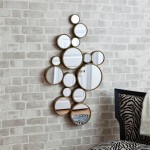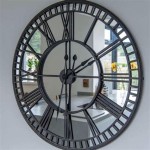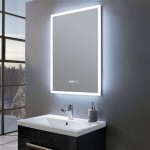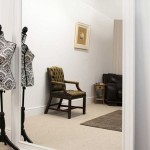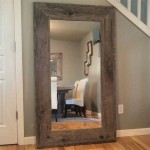Why Convex Mirrors Cannot Produce Real Images
Convex mirrors, characterized by their outwardly curved reflecting surface, possess distinct optical properties that prevent them from forming real images. Understanding these properties requires a closer look at the behavior of light rays as they interact with the mirror's surface.
Key Points: Reflection and Image Formation
Light rays incident on a convex mirror diverge upon reflection. This divergence is a fundamental characteristic dictated by the mirror's shape. The reflected rays, when traced backward, appear to originate from a point behind the mirror. This point of apparent origin is where the virtual image is formed.
Key Points: Real vs. Virtual Images
A real image is formed when light rays converge at a point after reflection or refraction. This convergence allows the image to be projected onto a screen. A virtual image, on the other hand, is formed when light rays appear to diverge from a point. Because the rays do not actually converge, a virtual image cannot be projected onto a screen.
Key Points: Focal Point and Center of Curvature
The focal point of a convex mirror is the point where parallel rays of light appear to converge after reflection. It is a virtual focal point located behind the mirror. The center of curvature is the center of the sphere from which the mirror is a section. For a convex mirror, the center of curvature is also located behind the mirror.
Key Points: The Role of Divergence in Image Formation
The diverging nature of reflected rays from a convex mirror is the primary reason why real images cannot be formed. Because the reflected rays spread outward, they never intersect in front of the mirror. This lack of convergence precludes the formation of a real image.
Key Points: Understanding Image Characteristics
Images formed by convex mirrors are always virtual, upright, and diminished in size compared to the object. The virtual nature stems from the apparent divergence of reflected rays. The upright orientation indicates that the image is not inverted. The diminished size results from the spreading of the reflected rays, making the image appear smaller than the actual object.
Key Points: Ray Diagrams and Image Location
Ray diagrams are a useful tool for visualizing image formation. To construct a ray diagram for a convex mirror, one typically draws two rays from the object: one parallel to the principal axis and another directed towards the center of curvature. The reflected rays are then traced backward to locate the virtual image behind the mirror. This graphical method confirms the virtual, upright, and diminished nature of the image.
Key Points: Practical Applications of Convex Mirrors
The properties of convex mirrors, while preventing real image formation, make them suitable for various applications. Their ability to provide a wider field of view is exploited in security mirrors, car side mirrors, and at blind corners in roads. The diminished size of the image allows a larger area to be viewed, enhancing safety and visibility.
Key Points: Comparing Convex Mirrors with Concave Mirrors
In contrast to convex mirrors, concave mirrors, with their inwardly curved reflecting surfaces, can produce both real and virtual images depending on the object's location. When the object is placed beyond the focal point of a concave mirror, a real, inverted image is formed. However, when the object is placed between the focal point and the mirror, a virtual, upright, and magnified image is formed. This difference in behavior highlights the distinct optical characteristics of convex and concave mirrors.
Key Points: The Significance of Mirror Shape
The shape of the mirror's reflecting surface is the determining factor in its image-forming properties. The outward curve of a convex mirror dictates the divergence of reflected rays, leading to the formation of virtual images. Conversely, the inward curve of a concave mirror allows for both convergence and divergence, enabling the formation of both real and virtual images. Understanding the relationship between mirror shape and image formation is crucial in optics.
Can A Convex Mirror Produce Real Image
Can A Convex Mirror Form Magnified Image Quora
Can A Convex Mirror Form Magnified Image Quora
Can A Convex Mirror Form Real Image Quora
Why Do Plane Mirrors And Convex Form Only Virtual Images Quora

Can A Convex Mirror Produce Real Image When The Object Is Virtual And Vice Versa Concave If Yes How Will It Be Possible Why Quora

Image Formation By Convex Mirrors
When Does A Plane Mirror Produce Real Image Quora

Difference Between Real Image And Virtual
Is It Possible For A Convex Mirror To Produce Real Image When The Object Virtual Quora


